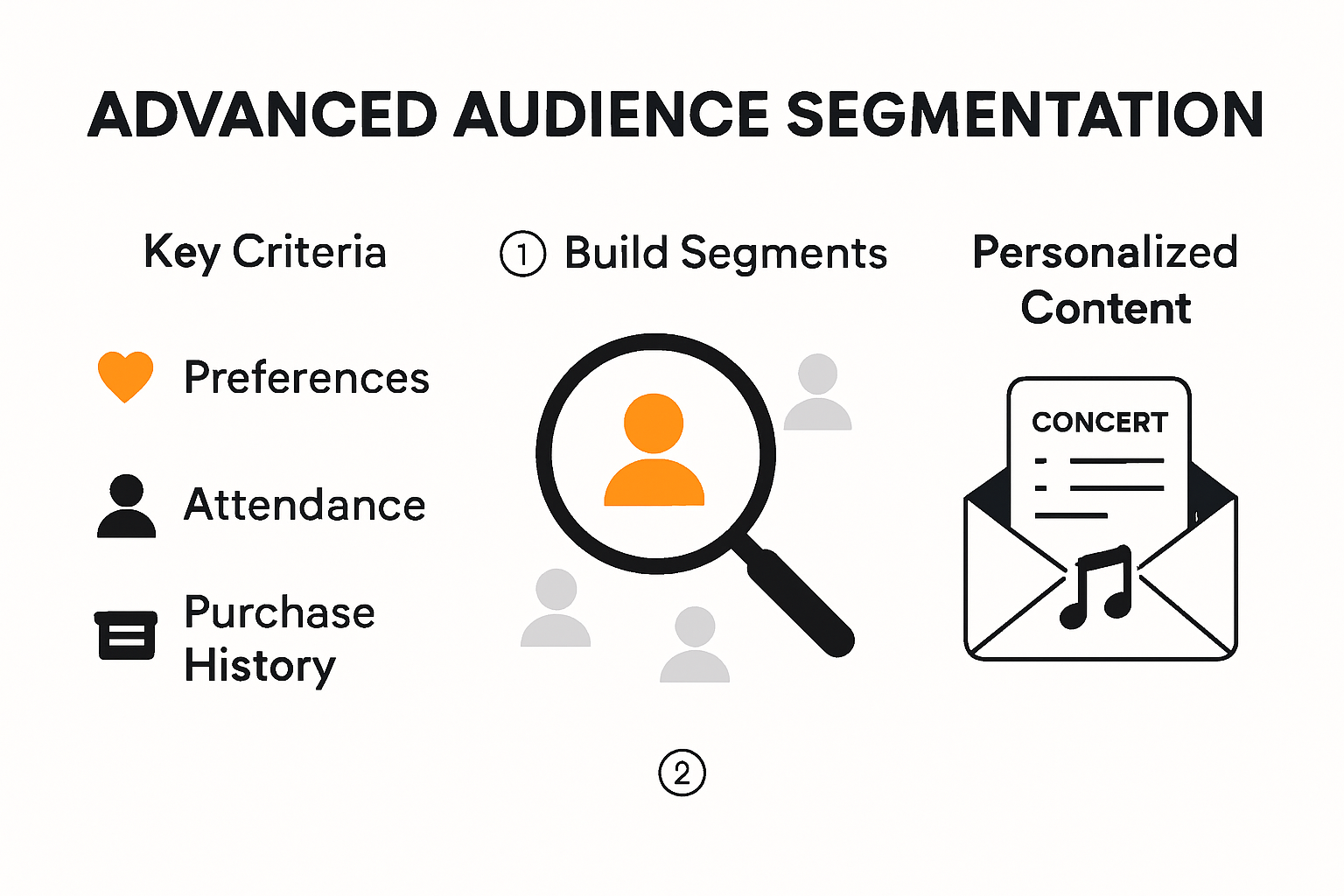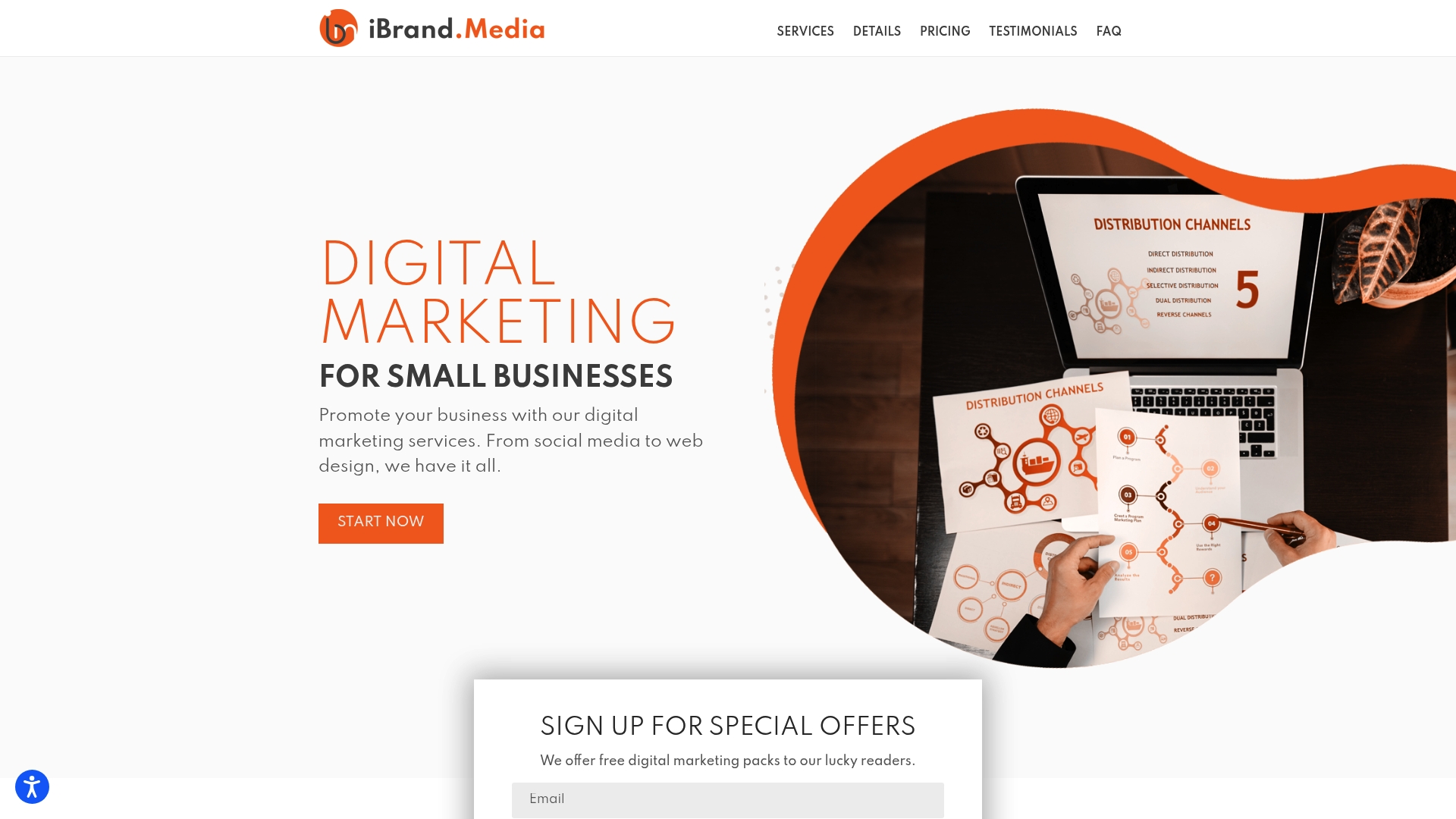Venue owners count on email marketing to stay connected with guests and fill their calendars. Surprisingly, even though personalized emails can lift response rates by over 20 percent, most local venues still rely on generic, one-size-fits-all blasts that go unread. The real breakthrough happens when you tap into data-driven personalization and smart audience segmentation—uncovering a direct path to packed events and real loyalty.
Table of Contents
- Building An Email List For Your Venue
- Crafting Engaging Emails That Drive Action
- Personalization And Segmentation Tactics For Success
- Measuring Results And Optimizing Campaigns
Quick Summary
| Takeaway | Explanation |
|---|---|
| Build a quality email list | Focus on gathering engaged subscribers by offering clear incentives for joining your email list. |
| Personalize email content | Tailor your messages to specific audience segments using their interests and past behaviors to enhance engagement. |
| Utilize A/B testing | Regularly test different email elements to optimize performance and find what resonates best with your audience. |
| Monitor key performance metrics | Track open rates, click-through rates, and conversion rates to gauge the effectiveness of your campaigns. |
| Continuously refine strategies | Adapt your approach based on data insights and emerging trends to keep your email marketing effective and relevant. |
Building an Email List for Your Venue
Creating a robust email list for your venue represents a strategic foundation for targeted marketing and sustained customer engagement. Successful email list building requires a systematic approach that balances ethical data collection with compelling value propositions for potential subscribers.
Understanding Email List Fundamentals
Email list development starts with recognizing the critical importance of permission-based marketing. According to research from the US National Library of Medicine, effective email outreach hinges on audience segmentation and explicit opt-in practices. This means your venue must provide clear, transparent methods for individuals to voluntarily share their contact information.
Venues can implement multiple strategies to attract email subscribers. Compelling signup incentives play a pivotal role in converting casual visitors into engaged email list members. These might include exclusive event previews, special discount codes, early booking access, or complimentary digital content that provides genuine value to potential subscribers.
Strategic List Building Techniques
Successful email list expansion requires a multifaceted approach. Physical and digital touchpoints offer numerous opportunities for list growth. At your venue, consider implementing signup stations with tablet devices, QR codes linked to registration forms, and signup prompts during event check-ins. Online platforms demand equally strategic approaches.
Website optimization becomes crucial in email list development. Integrate signup forms strategically across your digital platform – on homepage headers, within content sections, and as exit-intent popups. Each form should clearly communicate the benefits of subscribing and include minimal required fields to reduce friction. Reducing form complexity increases conversion rates significantly.
Digital marketing channels provide additional list-building opportunities. Social media platforms can serve as powerful email list generation tools. Create targeted ad campaigns offering valuable lead magnets specific to your venue’s audience. Host online contests, webinars, or virtual events that require email registration to participate.
Data collection must prioritize quality over quantity. A smaller, engaged email list consistently outperforms large lists with low interaction rates. Focus on attracting subscribers genuinely interested in your venue’s offerings. Segment your list based on demonstrated preferences, allowing for more personalized and relevant communication.
Maintaining List Integrity and Engagement
Maintaining a healthy email list requires ongoing management. Regularly clean your list by removing inactive subscribers and ensuring compliance with email marketing regulations. Implement double opt-in processes that confirm subscriber intent and reduce potential spam complaints.
Email list building is an evolving strategy that demands continuous refinement. Monitor signup conversion rates, experiment with different approaches, and remain adaptive to changing audience preferences. Learn more about effective lead generation strategies.
Remember that sustainable email list growth centers on providing consistent value. Each communication should offer something meaningful to your subscribers, transforming your email list from a marketing tool into a genuine community engagement platform.
To help compare various tactics discussed, here’s a summary table of venue email list-building strategies and their focus:
| Strategy | Physical/Digital | Primary Goal | Example Tools/Actions |
|---|---|---|---|
| Signup Stations at Venue | Physical | Convert walk-ins & event guests | Tablets, QR codes |
| Website Signup Forms | Digital | Capture online interest | Homepage, popups, content sections |
| Social Media Campaigns | Digital | Attract new, targeted subscribers | Lead ads, contests, event promos |
| Event Check-In Prompts | Physical | Engage attendees at point of contact | Paper/email forms, opt-in tablets |
| Online Contests/Webinars | Digital | Incentivize registration, generate leads | Signup requirement for participation |
Crafting Engaging Emails That Drive Action
Creating email content that captures attention and motivates recipients to take action requires a strategic approach that combines compelling storytelling, precise targeting, and psychological understanding of customer motivation. The art of crafting engaging emails goes far beyond simple communication.
Personalization and Audience Segmentation
According to the U.S. Chamber of Commerce, personalizing email content is crucial for enhancing engagement. Audience segmentation allows venues to create targeted messages that resonate with specific customer groups. This means moving beyond generic mass communications and developing nuanced approaches that speak directly to different customer personas.
Effective personalization involves more than inserting a recipient’s name. Deep personalization requires understanding customer preferences, past interactions, and potential future interests. For venue marketing, this might mean segmenting audiences based on event attendance history, preferred event types, or previous booking patterns. By tailoring content to specific audience segments, venues can dramatically increase email open rates and conversion potential.
Compelling Content and Design Strategies
Email design plays a critical role in driving action. Visual hierarchy, concise messaging, and strategic use of design elements can significantly impact reader engagement. Craft subject lines that are provocative yet honest, creating immediate curiosity. The preview text should complement the subject line, offering an additional incentive for recipients to open the email.
Structure your emails with a clear visual flow. Use high-quality images that represent your venue’s atmosphere and upcoming events. Include prominent call-to-action buttons that stand out and clearly communicate the next step. Color psychology matters – choose colors that align with your brand and create emotional resonance with your target audience.
Optimization and Performance Tracking
As recommended by the U.S. Small Business Administration, integrating email marketing with broader business objectives is essential. This means establishing clear performance metrics and continuously refining your approach based on data-driven insights.
Implement A/B testing to understand what content, subject lines, and design elements generate the highest engagement. Track key performance indicators such as open rates, click-through rates, and conversion metrics. Learn advanced techniques for improving online engagement.
Remember that successful email marketing is an iterative process. Each campaign provides valuable learning opportunities. Stay adaptable, experiment with different approaches, and always prioritize providing genuine value to your subscribers. The most effective emails feel like a personalized invitation rather than a generic marketing message.
Personalization and Segmentation Tactics for Success
Modern email marketing demands sophisticated approaches that transform generic communications into targeted, meaningful interactions. Personalization and segmentation represent powerful strategies that enable venues to connect more authentically with their audience, driving higher engagement and conversion rates.
Advanced Audience Segmentation Techniques
Research from ResearchGate reveals that AI-driven personalization can dramatically enhance email marketing performance. Effective segmentation goes beyond basic demographic information, diving deep into behavioral patterns, engagement history, and predictive analytics.
Venues can create sophisticated segments based on multiple dimensions. Key segmentation criteria might include event preferences, past attendance frequency, ticket purchase history, preferred event times, and interaction levels with previous marketing communications. By developing granular audience profiles, venues can craft hyper-targeted messages that resonate on a personal level.
To clarify how venues can segment their email lists, here’s a table summarizing possible segmentation criteria and example audience traits:
| Segmentation Criterion | Example Traits/Behaviors |
|---|---|
| Event Preferences | Jazz concerts, classical music, workshops, festivals |
| Attendance Frequency | First-time attendee, regular, VIP |
| Ticket Purchase History | Number of tickets, spend level, date of last purchase |
| Preferred Event Times | Weeknights, weekends, afternoon, evening |
| Engagement Level | Click rate, open history, content interaction |
Personalization Strategies That Convert
According to a field experiment published in academic research, targeted personalization can increase email response rates by over 20%. This goes far beyond simply inserting a recipient’s name. True personalization involves creating content that feels uniquely crafted for each audience segment.
Implement dynamic content blocks that automatically adjust based on recipient characteristics. For instance, a jazz enthusiast might receive emails highlighting upcoming jazz performances, while a classical music fan sees different event recommendations. Leverage data points like previous ticket purchases, browsing history, and interaction patterns to create these personalized experiences.
Technological Tools and Implementation

Modern email marketing platforms offer sophisticated segmentation and personalization tools. Integrate customer relationship management (CRM) systems to collect and analyze detailed audience data. Utilize machine learning algorithms that continuously refine audience segments based on evolving interaction patterns.
Behavioral triggers provide another powerful personalization mechanism. Set up automated email sequences that respond to specific customer actions. Someone who browsed but didn’t purchase tickets might receive a gentle reminder, while a frequent attendee could get exclusive early access to new event announcements. Explore advanced local customer targeting techniques.
Remember that personalization is an ongoing process of refinement. Continuously test different approaches, analyze performance metrics, and be prepared to adapt your strategies. The most successful email marketing programs treat each communication as an opportunity to build a deeper, more meaningful relationship with their audience.
Measuring Results and Optimizing Campaigns
Successful email marketing requires more than creating compelling content. Venues must develop robust measurement and optimization strategies that transform raw data into actionable insights, continuously improving campaign performance and audience engagement.
Key Performance Metrics and Analytics
According to Santa Clara University’s research, effective email marketing optimization begins with comprehensive performance tracking. Critical metrics venues should monitor include open rates, click-through rates, conversion rates, list growth rate, and email sharing/forwarding percentages.
Understanding these metrics provides a holistic view of campaign effectiveness. Performance benchmarks help venues identify strengths and potential improvement areas. For instance, an open rate below 20% might indicate weak subject lines, while low click-through rates could suggest misaligned content or ineffective call-to-action strategies.
A/B Testing and Continuous Improvement
Research exploring decision-making in email marketing campaigns highlights the importance of systematic testing and optimization. A/B testing allows venues to experiment with different email elements and scientifically determine what resonates most with their audience.
Implement structured A/B tests focusing on specific variables. These might include subject line variations, email design layouts, send times, content tone, or call-to-action button placements. By methodically testing and analyzing results, venues can incrementally improve their email marketing performance. Systematic experimentation transforms guesswork into data-driven strategy.
Advanced Optimization Techniques

Modern email marketing platforms offer sophisticated analytics tools that go beyond basic metrics. Utilize machine learning algorithms that provide predictive insights about audience behavior. These tools can help forecast optimal send times, predict potential engagement levels, and suggest content personalization strategies.
Segmentation plays a crucial role in optimization. Analyze performance metrics across different audience segments to understand nuanced preferences. Some segments might respond better to certain content styles, imagery, or messaging approaches. Discover advanced engagement optimization strategies.
Remember that optimization is an ongoing process. Email marketing success requires continuous learning, adaptation, and a willingness to experiment. Regularly review your metrics, stay informed about emerging trends, and be prepared to pivot your strategies based on data-driven insights. The most successful venues treat their email campaigns as dynamic, evolving communication channels that grow and improve with each interaction.
Frequently Asked Questions
What are the key benefits of email marketing for local venues?
Email marketing helps local venues stay connected with guests, fill their calendars with events, and drive customer loyalty through targeted and personalized communication.
How can I build an effective email list for my venue?
An effective email list can be built by offering incentives for signups, using strategic digital and physical touchpoints, and ensuring compliance with permission-based marketing practices.
What personalization tactics should I use in my email campaigns?
Use dynamic content based on user behavior, segment your audience according to preferences and past interactions, and tailor messages to include relevant event recommendations for each audience segment.
How can I measure the success of my email marketing campaigns?
Monitor key performance metrics such as open rates, click-through rates, and conversion rates. Use A/B testing on different elements to improve performance continuously.
Turn Venue Email Challenges Into Real Business Growth
If you are struggling to fill your calendar and feel like your email blasts go ignored, you are not alone. Many local businesses discover that basic email campaigns miss the mark, failing to connect with real people or turn subscribers into loyal guests. This article made it clear that personalization, segmentation, and constant optimization are essential for results in 2025. Yet the truth is, mastering strategy and technology alone is overwhelming when you have a full event schedule to run. Want to stop guessing and finally see your email marketing deliver full rooms and steady bookings? Explore how our team at ibrand.media delivers expert solutions designed for venues and small businesses alike. We help you build segmented lists, craft emails that convert, and track every result—so you can focus on your next big event, not your next email.

Do not let another prospect slip away. Visit our Uncategorized | Ibrandmedia resources for more actionable insights or get started today at ibrand.media with a personalized digital strategy. Now is the time to turn your venue’s online marketing from a task into your ticket to growth. Connect with us for a custom plan and experience the power of advanced marketing, simplified.

Recent Comments